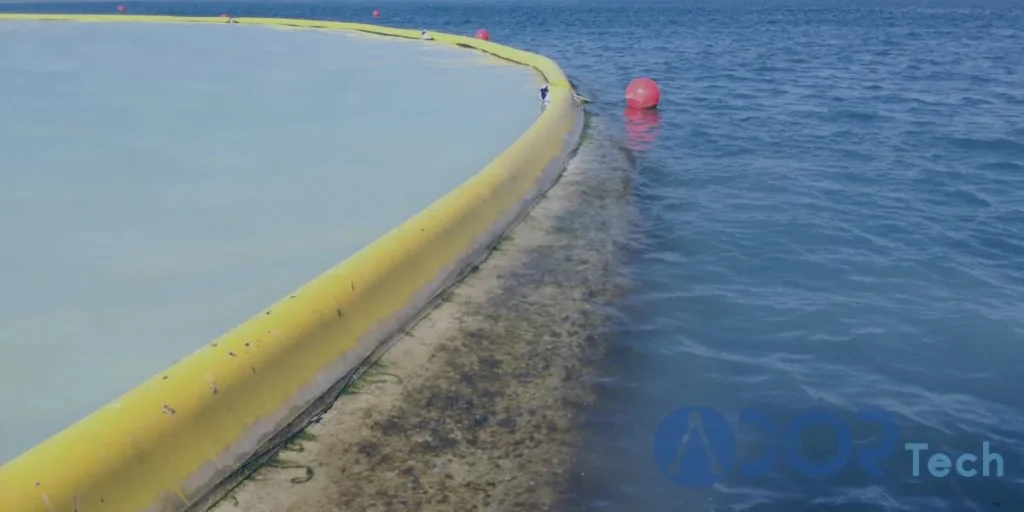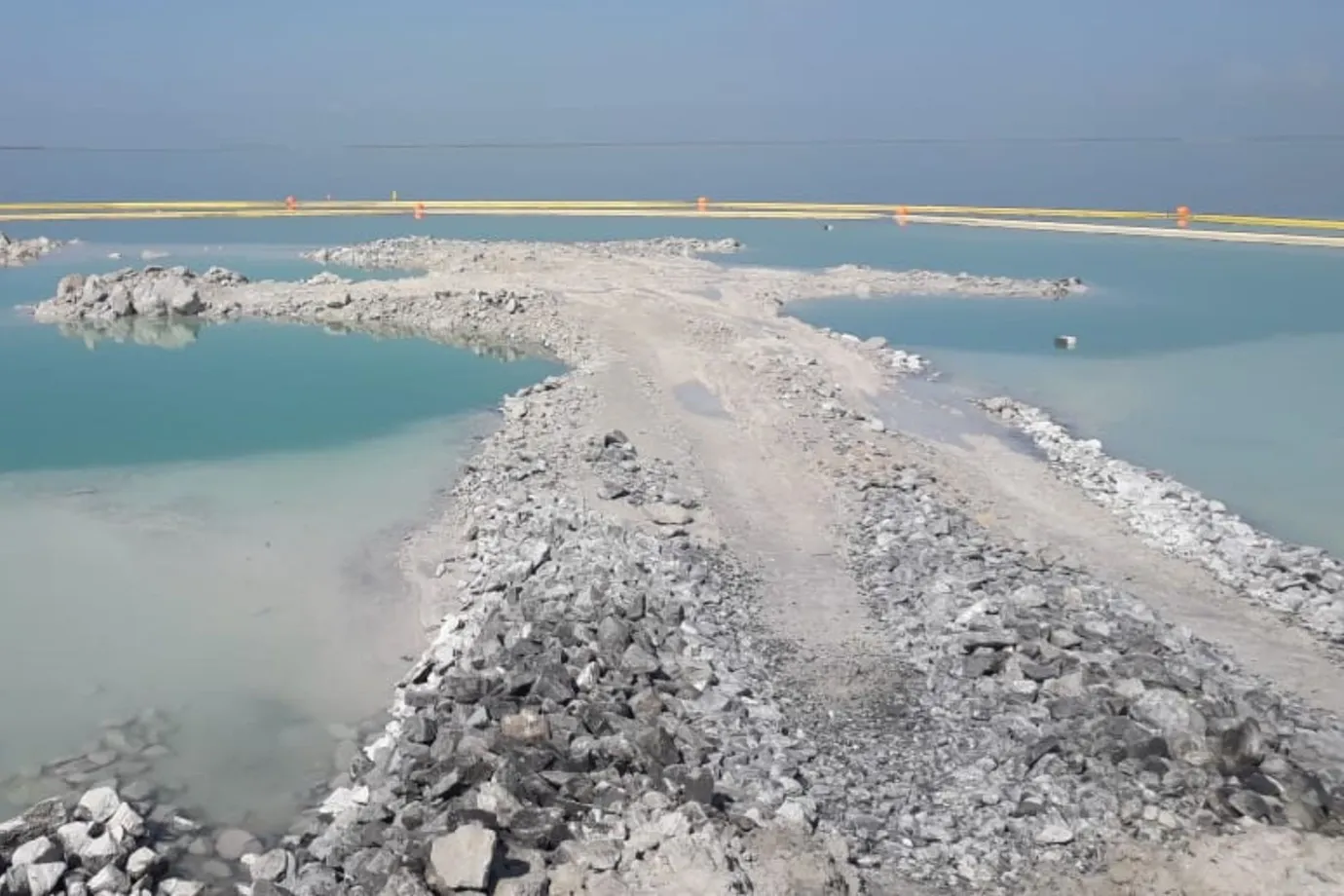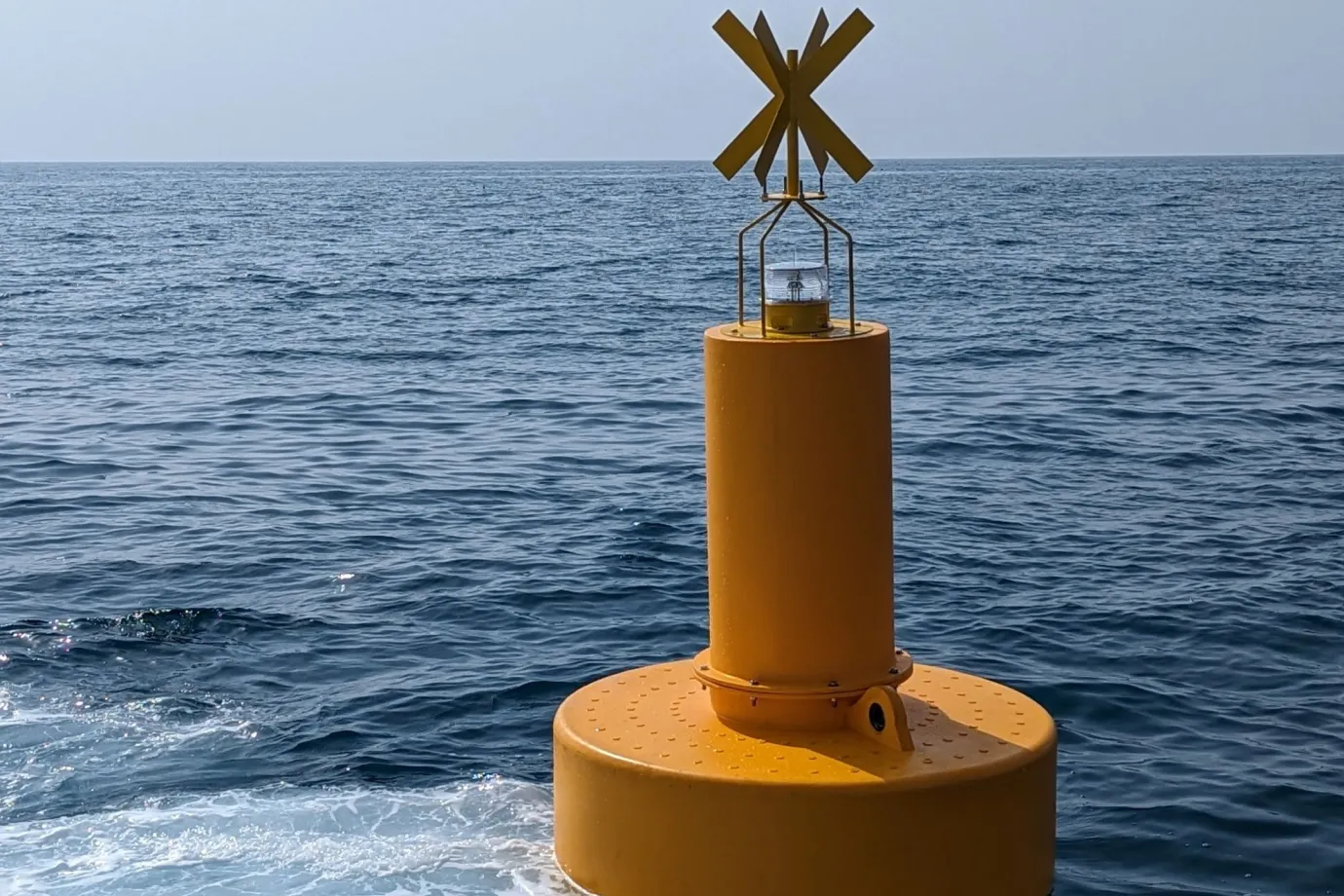Today, marine pollution is one of the world’s biggest concerns, and it can directly or indirectly impact the ecosystem. Oil spills, ocean mining, plastic waste, and debris are just a few factors that play a role in polluting the marine environment. Among these factors, sediment pollution is one of the most substantial issues that should be considered. Sediment is the loose soil particles that are derived from both natural erosion and human activities. Increasing these sediments affects water quality, disrupts navigation, and harms the ecosystem. In this blog post, we will discuss sediment control and the efficient solutions that are widely used in marine projects to reduce sediment pollution.
Need an effective way to manage turbidity on site?
Our “silt curtains” are designed to keep your project compliant and under control.

All About Sediment Pollution

Let’s delve into sediment itself initially. Sediment is the loose clay, silt, sand, and other soil particles derived either from natural erosion or human activities. The rocks are weathered over time, and the loose soil particles are transported by the river system to the sea or other marine environments. In some cases, the sediment can be derived from the decomposition of plants or animals, which is transferred by wind, water, or ice to the marine environments.
On the other hand, marine construction or mining projects are the major sources of pollution, incurring a considerable amount of sediment and silt. If these sediments are not controlled, they can cause serious damage to the ecosystem and even disrupt critical marine activities like navigation. In the following, we will explore the most significant impacts of sediment pollution.
The Impacts of Sediment Pollution

Sediment and silt impacts on marine environments are beyond water pollution. The ecosystem is the primary target of sediment. Increasing water temperature, irritating the fish gills and covering their eyes and scales, dislodging aquatic plants, suffocating fish eggs, and destroying the source of fish and other animals’ food are the most crucial impacts of sediment pollution on the ecosystem. Moreover, the sediments that come from marine construction or mining can sometimes contain toxic chemicals, which not only threaten the ecosystem but also pollute the water and significantly decrease its quality.
Sediment pollution also impacts critical marine activities. By settling to the bottom of the water body, sediment and silt can decrease the water depth and disrupt navigation. The intensive water currents can move the deposited sediments up and minimize the water’s clarity, making navigation difficult or impossible. In addition, if sediments find their way to the reservoirs, they can pollute the water supply and the water used for power generation.
Top 5 Sediment Control Solutions

To control sediment pollution and minimize its negative impacts, it is crucial to see what the type of sediment pollution is. If sediment comes from natural erosion, the solution is to use devices and tools for erosion control. Conversely, if the sediment comes from construction projects, the solution is to use devices or tools to prevent silt and sediment from spreading out in the water. However, these sediment control solutions depend on various factors. Here, we introduce the best sediment control solutions for both marine projects and natural erosion:
Erosion Control Blankets
Erosion control blankets, also known as erosion control mats, are specific nets that cover and hold the soil particles and sediments in place to prevent them from being transferred by water, wind, or other natural causes. They are designed in different types based on their materials, durability, weather conditions, and even the size of soil particles. The net design of erosion control blankets also does not harm vegetation, allowing plants to grow among them and receive air and water as much as they need.
Coir Logs and Straw Wattles
Coir logs are rolled-up organic blankets made of coconut fibers installed at the shorelines to protect them from eroding by water currents and waves. Due to their eco-friendly construction, coir logs can be nutrients to the ecosystem after two to five years and do not pollute the water itself. The meshed coconut fibers used in coir logs also allow vegetation to grow among them. Straw wattles, on the other hand, are cylindrical-shaped wattles made of wood fibers or wheat and rice straw, installed on shorelines and construction sites to prevent soil erosion and control sediment pollution.
Vegetation Buffers
Vegetation buffers are a bioengineering method for erosion and sediment control in which plants are used between land and water bodies to trap sediments and soil particles, preventing them from moving forward to the water and polluting it. In this method, bioengineers typically use native plants that can adapt to weather conditions and with high compression to be capable of trapping the sediments effectively.
Silt Fences

Silt fences, also referred to as sediment control fences, are geotextile barriers installed between land and water bodies to control sediment. By creating a durable barrier, silt fences efficiently prevent soil particles and sediments derived from construction sites from polluting the water and damaging the ecosystem. They are designed with various materials based on the required durability, strength, and weather conditions.
Silt Curtains

Silt curtains, also known as turbidity curtains or silt barriers, are the best solutions for sediment control in marine projects like constructing dams. These projects typically generate a substantial amount of silt and sediment. Silt curtains are installed in the marine construction site, preventing sediments from spreading out and polluting the water. Designed with various materials, silt curtains are provided in different types.
See also: “Review of the Role of Turbidity Curtains“
Which Sediment Control Solution Is the Best?
All the solutions above are the top ones used in sediment control, whether in marine projects or natural erosion. The first step in choosing the right sediment control solution is identifying the sediment types and their sources. Afterward, it should be noted what device can better adapt to the location’s features, such as weather conditions, water currents, amounts and types of sediment pollution, etc. Beyond their functionality, the materials used in these devices can differ, which affects their efficiency and durability. Therefore, you must choose a solution that better meets your requirements.
What ADOR Offers: Silt Curtains as an Effective Solution

As mentioned above, silt curtains are super-efficient barriers used to control sediment pollution in marine projects. ADOR provides innovative and customizable silt curtains, offering the best solution to proceed with that. Our silt curtains, also known as turbidity curtains or silt barriers, are designed in three primary types: standard, premium, and green, based on their density and the material used. They are provided fully customized to maximize the prevention of sediment pollution and adapt the marine project’s features as well.
Conclusion
In summary, sediment pollution has become a critical concern due to the importance of the ecosystem and water quality. Since the impacts and consequences of sediment pollution can be irreparable, finding a solution to control it is crucial. Whether the sediment pollution is derived from natural erosion or marine projects, there are various solutions provided to control it efficiently. Understanding each feature and functionality in detail can help you choose the right sediment control solution for marine projects. In this blog post, we aim to provide you with everything you need to know about the concept of sediment pollution and introduce top solutions to proceed with that.
Silt fences trap sediment primarily through ponding and settling behind fabric barriers. Their performance hinges on proper placement, fabrication, and maintenance; design flaws may lead to poor sediment control.
Turbidity curtains act as floating barriers that confine suspended particles within project zones, such as dredging or restoration areas, allowing sediment to settle safely without spreading to adjacent water bodies.
A robust sediment control plan should map site risks, define control tactics for erosion and sediment, meet regulatory standards, and include routine inspection and maintenance practices.




